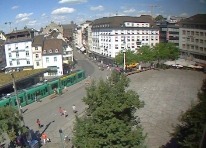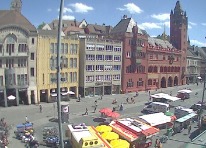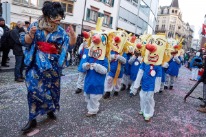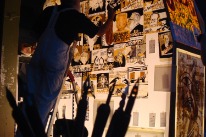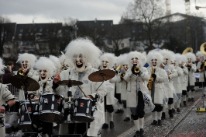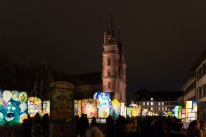The Basel Carnival – UNESCO Intangible Cultural Heritage
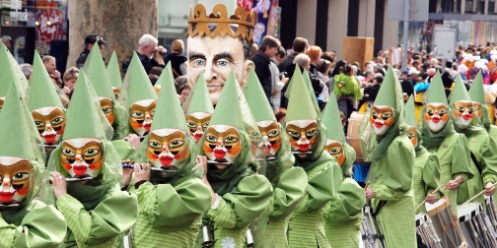
Going back as far as the 14th century, the Basler Fasnacht carnival has gone through many changes over the centuries. In its current form, the ‘three best days of the year’ – as it is often referred to – attract visitors from far beyond the city borders. In December 2017, UNESCO included the Basler Fasnacht carnival in the Representative List of Intangible Cultural Heritage.
On the Monday after Ash Wednesday, locals and visitors meet at four o’clock in the morning in the dark and spooky city centre. Everything is quiet until the ‘forward march!’ of the drum majors launches the morning parade and thousands of costumed drummers and piccolo players mark the opening of the carnival. On Monday and Wednesday afternoon, around 11,000 costumed revellers present countless themes at the big parades. The Tuesday is dedicated to the children’s carnival and Guggenmusik (performed by carnival marching bands). Schnitzelbank groups (of which there are around one-hundred) presenting satirical texts with illustrations in restaurants and cellars play a very special role at the Basler Fasnacht. A further highlight consists of the lantern exhibition on Münsterplatz where approximately 180 lanterns light up the medieval square and its resplendent works of art.
Role of the court jester
The Basler Fasnacht carnival is both a social tradition and a celebration. Taking place on three days and nights, the Fasnacht phenomenon kicks off on the Monday after Ash Wednesday at four o‘ clock in the morning and ends on the following Thursday at the same time. The Fasnacht also involves a series of stage events before the carnival and three Bummelsonntage (stroll Sundays) that finish off the carnival year. The Basler Fasnacht also pervades other areas of the city’s social life and represents an important aspect of the spirit of the city.
The central purpose of the Basler Fasnacht is playing the role of the classic court jester: Last year’s inconsistencies, defects and blunders in politics and society as well as singularities of our contemporary times are satirised and caricatured with mockery and pointed humour, not only at the local but also at the national and international level. Satire is portrayed with the help of costumes, masks and imaginative accessories and presented in Basel German dialect, mostly in verse. In a traditional and very unique way, the Basler Fasnacht is thus a themed carnival. At the same time, it is also a family celebration of togetherness and friendship, expressed in colours, music and genial company.
Long application process
UNESCO took the definitive decision at its 12th Session of the Intergovernmental Committee for the Safeguarding of the Intangible Cultural Heritage, which took place on Jeju Island (Korea) from 4 to 8 December 2017.
In March 2016, after a lengthy selection process, the Swiss Confederation decided to propose the Basler Fasnacht for inclusion in the UNESCO Representative List of Intangible Cultural Heritage. Following the inclusion of Vevey’s Fête des Vignerons in 2016, the Basler Fasnacht is Switzerland’s second submission for the List.
The proposal was preceded by a thorough and extensive application phase. The application for the inclusion of the Basler Fasnacht in the UNESCO List of Intangible Cultural Heritage was prepared by the Basler Fasnacht Committee in cooperation with the Swiss Federal Office of Culture (BAK), the Department of Presidential Affairs of the Canton of Basel-Stadt, the Museum der Kulturen Basel and numerous carnival participants as well as other stakeholders who mostly performed the work on a voluntary basis.
The Government of the Canton of Basel-Stadt and the Fasnachts committee would like to take this opportunity to thank the over 2,500 supporters whose signatures and submissions to the UNESCO have made the candidacy of the Basler Fasnacht possible.
